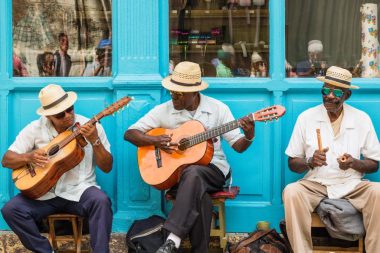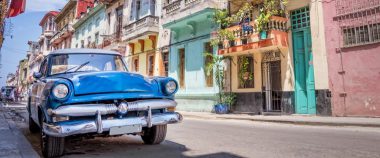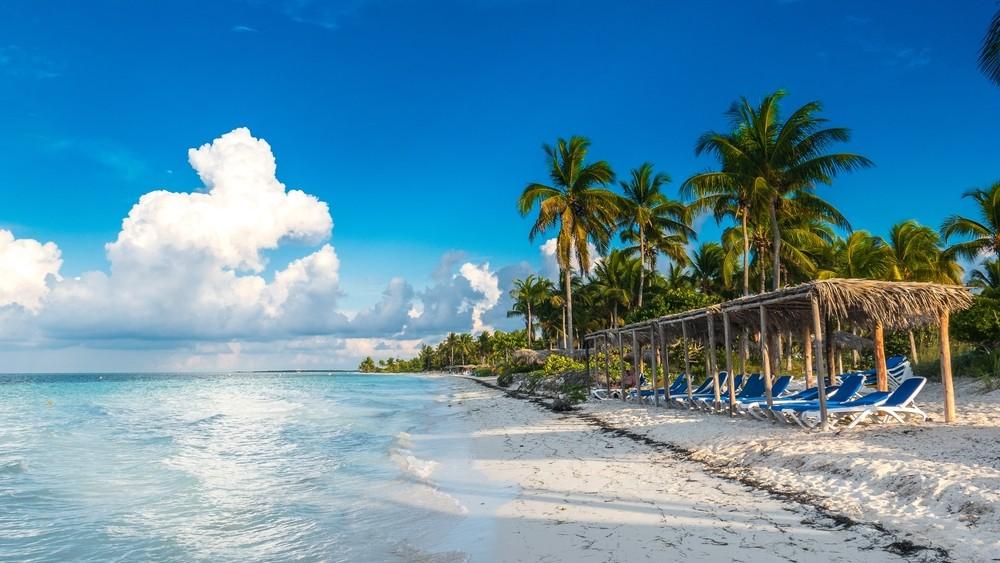A Caribbean island state has the ability like no other to awaken particularly strong longings with pictures and anecdotes: Cuba presents itself as a unique dream destination with Caribbean dream beaches, tropical landscapes, unique mountain ranges, music and cigars.

A non-stop flight from Germany to Cuba takes less than twelve hours. The door to his Cuban adventure now opens for the traveler. At first, the capital of the Antilles island presents itself as intrusive and loud, sometimes aggressive and here and there decayed: Havana shines in the warm sunshine with its own, still morbid charm.
If you let your eyes wander over houses, street canyons and backyards after the quick first impression, you will soon discover countless beauties. Between the old town with the Castillo de la Real Fuerza, the baroque Catedral de San Cristóbal or the Plaza Vieja and the Capitol as the city’s landmark, the freshly restored Havana shines. On the one hand, travelers get an unforgettable impression of the exuberant joie de vivre of the Habaneros and, on the other hand, of the charm of Havana, as it must have affected Americans and Europeans during the first half of the 20th century.
Cuban joie de vivre
In the tropical nights and usually into the dawn, the Son Cubano groups make music under the open sky. In addition, people celebrate spiritedly with cocktails, rum and cigars, and so it is soon understandable why the great peace and relaxation in the capital of the eleven million country plays a rather subordinate role. On the one hand, many Cubans are proud of their national heroes such as Che Guevara, Maximo Gomez, José Marti or Antonio Maceo – on the other hand, they love their Havana. They say:
“Cuba is Havana – the rest is landscape.”
On the streets of the island
That Havana is not everything, however, visitors experience on a round trip across the Antilles island. The often pothole-strewn roads require the driver’s special attention, and it is not uncommon for bicycles, horse-drawn carriages and broken down vintage cars to block the route. Sociably grouped cows and bleating herds of sheep gather on the asphalt in some places and walkers do not even stop at the motorways.
So it’s best to forget the fast pace of life in Havana right away. The travel impressions that now appear become all the more intense: Green sugar cane fields, romantic villages and shrill billboards along the way – this is another side of Cuba.
Magical Trinidad

If you visit the city of Trinidad, you probably get the best chance to understand Cuba. Once founded in 1514 by the Spanish conquistador Diego Velázquez de Cuéllar on the south coast as “Villa De la Santísima Trinidad”, the spirit of Bacardi and the Havana Club blows through the wealthy city. The old town of Trinidad is closed to both car and horse traffic, so you can explore the historical sights on foot at your leisure. The central point and biggest tourist attraction is the Plaza Mayor.
The colonial-style square is surrounded by all the major museums, but time seems to stand still until the evening. Only then does it come alive when the samba groups play and locals and their guests come to dance, enjoy mojito or Cuba Libre and follow impulsive conversations. Then Trinidad becomes magical.
Excursion destinations in the vicinity of Trinidad are the sugar cane valley Valle de los Ingenios and the Topes de Collantes National Park.
It is located in the Sierra de Escambra. With its location between Trinidad, Santa Clara and Santi Spiritus, it is always worth a day trip, especially since the concentrated mass tourism has not yet reached this part of Cuba. Here, the low mountain range is covered by lush, green rainforest vegetation. Babbling streams and rivers as well as enchantingly beautiful lakes make the Sierra de Escambra the ideal place to unwind. The great bathing fun, on the other hand, is on the white beaches of the Ancón peninsula.
On the beach of Ancón
Not far away is the beach of the Ancón peninsula. Visitors experience welcome bathing fun in the “big bathtub”, as the Caribbean is called by the Cubans. Under palm trees, on a white beach and calm, crystal-clear water, you quickly get the feeling of having arrived in true paradise.
The turquoise sea invites you to swim, snorkel or take boat tours into the Caribbean marine world. So Ancón flatters with harmony, calm and serenity.
It doesn’t really matter where you are: In Cuba, beautiful beaches are never far away – and neither are mountains.
The particularly exciting mountain formations can be explored in the Vinale Valley. The mountains that rise from the very fertile and flat valley look like sugar loafs. They are best explored by means of a guided ride or rented bicycle. Individual speleology should not be missing on any visit program: The local caves served as good hiding places for fleeing slaves over two centuries ago. They spent a lot of time here until they were freed.
Cuba needs time
If you want to enjoy Cuba, you should take your time. The impressions of the largest of the tropical Antilles island are colorful and full of diversity. Only the perception of towns and villages, beaches and mountains, lush greenery and, first and foremost, the friendliness, serenity and joie de vivre of the inhabitants gives visitors an impression of the true atmosphere of the island. All those who have been able to feel this once want to visit Cuba again and again.
Travel information Cuba
| Capital | Havana |
|---|---|
| Form of government | Republic socialist, authoritarian one-party system |
| Currency | Cuban Peso (CUP) Convertible Peso (CUC) |
| Area | approx. 109,884 km² |
| Population | approx. 11,239,200 (as of 2016) |
| Languages | Spanish |
| Electricity grid | 110/220 volts, 60 Hz |
| Area code | +53 |
| Time zone | UTC−5 UTC−4 |


